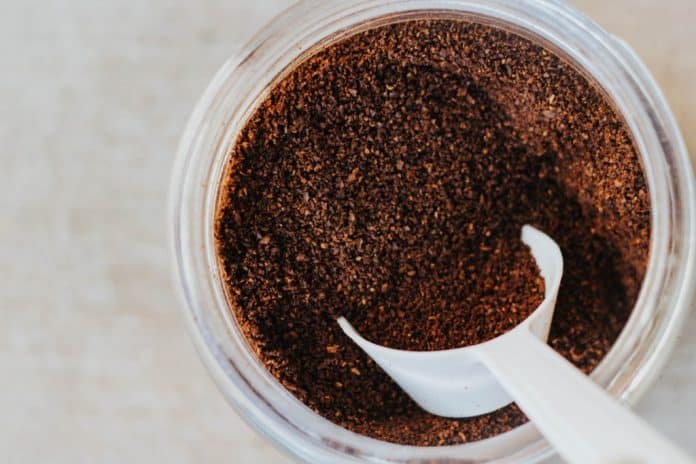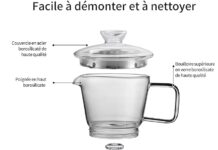Coffee lovers often find themselves pondering the age-old question – can you reuse the coffee grounds in a Bialetti? With the rise of sustainability and resourcefulness, it’s only natural to wonder if there are ways to extend the life of these precious grounds. In this article, we will explore the possibility of reusing coffee grounds in a Bialetti coffee maker, shedding light on the potential benefits and drawbacks of this practice. So, grab your favorite brew and join us as we uncover the secrets of giving those grounds a second life.
What is a Bialetti?
A Bialetti is a popular brand of coffee maker that was invented by Alfonso Bialetti in the early 1930s. It is known for its unique and iconic design, which consists of a two-chambered pot made of aluminum, with the lower chamber being used for water and the upper chamber for coffee grounds. The Bialetti coffee maker is a stovetop espresso maker that is commonly used in Italian households and has gained popularity worldwide.
Description of a Bialetti coffee maker
The Bialetti coffee maker, also known as a Moka pot, is a simple and user-friendly device. It is composed of three main parts: the bottom chamber where water is added, the middle funnel-shaped filter where coffee grounds are placed, and the top chamber where the brewed coffee collects. The pot is designed to be used on a stovetop, with the heat from the stove creating pressure that forces the water through the coffee grounds and into the top chamber, resulting in a strong and flavorful espresso-like coffee.
How does a Bialetti coffee maker work?
The Bialetti coffee maker operates based on the principle of pressure and heat. To use it, water is poured into the bottom chamber, and finely ground coffee is added to the filter in the middle chamber. As the pot is placed on a heat source, the water heats up and creates steam, which builds up pressure in the bottom chamber. This pressure forces the hot water to rise through the coffee grounds, extracting their flavors and oils as it passes through. The brewed coffee then collects in the top chamber, ready to be poured and enjoyed.
Understanding Coffee Grounds
What are coffee grounds?
Coffee grounds are the solid remnants left behind after brewing coffee. They consist of the finely crushed beans that have been used to extract the flavors and aromas during the brewing process. Coffee grounds can vary in size and texture depending on the grind size, with finer grounds being used for espresso and coarser grounds for methods like French press.
Why are coffee grounds important in brewing?
Coffee grounds play a crucial role in the brewing process. When hot water comes into contact with the grounds, it extracts the soluble compounds such as caffeine, oils, and flavors. The size and consistency of the grounds can influence the extraction process, affecting the strength and taste of the resulting brew. It is important to use the correct grind size for the specific brewing method to achieve optimal flavor extraction.
What happens to coffee grounds after brewing?
After brewing, coffee grounds are typically considered waste and are commonly discarded. However, there are various ways to reuse or recycle coffee grounds, as they still contain some residual flavor and nutrients. This provides an opportunity for experimentation and exploring alternative uses for coffee grounds.
Factors to Consider
Type of coffee grounds
The type of coffee grounds used can greatly impact the flavor and quality of the brewed coffee. Different coffee beans from various regions and roasts can result in variations in taste, acidity, and aroma. It is important to select coffee grounds that align with personal preferences and desired flavors.
Coffee quality
The quality of the coffee used can significantly affect the overall taste and enjoyment of the brewed coffee. Choosing high-quality, freshly roasted beans will likely result in a more flavorful and satisfying cup of coffee. Investing in good quality coffee grounds can make a noticeable difference in the final brew.
Brewing method
The brewing method employed also plays a role in the overall coffee experience. Different methods, such as pour-over, French press, or the use of a Bialetti coffee maker, can influence aspects like the strength, body, and clarity of the coffee. Understanding the characteristics of each brewing method and choosing the most suitable one can enhance the coffee-drinking experience.
Using Reused Coffee Grounds in a Bialetti
Recommendations from Bialetti
According to Bialetti, it is possible to reuse coffee grounds in a Bialetti coffee maker. Instead of discarding the grounds after brewing, they can be saved and reused for subsequent pots. Bialetti suggests that the grounds can be reused up to three times, maximizing their potential and reducing waste.
Implications for flavor
Reusing coffee grounds can have both positive and negative implications for flavor. On one hand, reused grounds can result in a milder and less intense coffee. This can be appealing for those who prefer a more subtle taste. On the other hand, the flavors extracted in previous brews may diminish with each reuse, leading to a weaker and less flavorful cup of coffee.
Potential risks and downsides
While reusing coffee grounds in a Bialetti can be a cost-effective and environmentally friendly approach, there are potential downsides to consider. Over time, reused grounds can accumulate sediments and oils, which may negatively impact the taste and quality of the coffee. Additionally, improper storage or prolonged reuse can lead to the growth of mold or bacteria, posing health risks. It is important to exercise caution and adopt proper hygiene practices when reusing coffee grounds.
Benefits of Reusing Coffee Grounds
Cost-effectiveness
One of the significant benefits of reusing coffee grounds in a Bialetti coffee maker is the cost-effectiveness it offers. By reusing the grounds, you can stretch your coffee supply, reducing the need to purchase new grounds frequently. This can be particularly advantageous for coffee enthusiasts who consume coffee regularly.
Reducing waste
The practice of reusing coffee grounds contributes to the reduction of waste. By repurposing the grounds instead of discarding them after brewing, you are actively participating in sustainable and eco-friendly practices. This small change can have a positive impact on the environment by decreasing the amount of organic waste that ends up in landfills.
Enhancing certain flavors
Reusing coffee grounds can also lead to unique flavor profiles that may appeal to some individuals. As the grounds are reused, the flavors that are extracted can change, resulting in subtle variations in taste and aroma. This can be an exciting opportunity for coffee enthusiasts to experiment and discover different flavor combinations that they may enjoy.
Alternative Uses for Coffee Grounds
Gardening and composting
Coffee grounds can be an excellent addition to compost piles and gardens. They are rich in organic matter and contain valuable nutrients like nitrogen, potassium, and phosphorus, which are essential for plant growth. Coffee grounds can help improve soil drainage, promote earthworm activity, and even act as a natural deterrent to certain pests.
Body and beauty care
Coffee grounds can also be repurposed for body and beauty care routines. They can be used as a natural exfoliant to remove dead skin cells and leave the skin feeling refreshed and smooth. Additionally, coffee grounds can be combined with other ingredients to create homemade face masks, scrubs, or even hair treatments. Their antioxidant properties can help promote healthy skin and hair.
Cleaning and deodorizing
Coffee grounds have natural deodorizing properties, making them a great option for eliminating unwanted odors. Placing dry coffee grounds in a small dish can help absorb strong cooking smells or musty odors in refrigerators. They can also be used as a gentle abrasive for cleaning surfaces or removing stubborn stains. Coffee grounds are versatile and can be used in various household cleaning applications.
Tips for Reusing Coffee Grounds in a Bialetti
Ensure proper storage
To reuse coffee grounds effectively, it is important to store them properly. After each use, allow the grounds to dry completely to prevent mold growth. Once dry, transfer the grounds to an airtight container and store them in a cool and dark place. This will help preserve the flavors and prevent any odor transfer.
Avoid mixing old and fresh grounds
When reusing coffee grounds, it is best to avoid mixing old and fresh grounds together. The flavor profiles of the reused grounds may be altered, and the overall quality of the coffee may be compromised. It is advisable to only reuse grounds from the same batch and avoid combining them with fresh grounds.
Experiment with ratios
To achieve the desired flavor and strength when using reused coffee grounds, it may be necessary to experiment with the ratios of grounds to water. Adjusting the amount of grounds used in each brew can help compensate for any potential loss of flavor or strength. It is recommended to start with a slightly higher ratio of grounds to water and gradually adjust to find the perfect balance.
How Many Times Can Coffee Grounds be Reused?
Depends on the type of coffee
The number of times coffee grounds can be reused depends on various factors, including the type of coffee used. Different coffee beans have different flavors and oil contents, which can affect their reusability. Lighter roasts and beans with higher oil levels tend to have a shorter lifespan for reuse, as the flavors are extracted more quickly.
Factors affecting reuse potential
Apart from the type of coffee, several other factors can influence the potential for reusing coffee grounds. These include the brewing method, the grind size, and personal preferences regarding taste and strength. It is essential to monitor the quality and taste of the coffee with each reuse, adjusting the variables as necessary to maintain a satisfactory brew.
Avoiding Over-extraction or Under-extraction
Adjusting brewing time
To avoid over-extraction or under-extraction when reusing coffee grounds, it may be necessary to adjust the brewing time. If the coffee tastes too weak or lacking in flavor, brewing for a slightly longer duration can help extract more desirable flavors. Conversely, if the coffee tastes overly bitter or strong, reducing the brewing time may improve the balance and prevent over-extraction.
Maintaining proper water temperature
Maintaining the proper water temperature is crucial when reusing coffee grounds. If the water temperature is too low, the extraction process may be insufficient, resulting in under-extracted and weak coffee. On the other hand, if the water temperature is too high, it can lead to over-extraction, resulting in a bitter and unpleasant taste. Ensuring the water temperature is within the recommended range for the specific brewing method is essential for achieving a balanced and flavorful brew.
Conclusion
In conclusion, the decision to reuse coffee grounds in a Bialetti coffee maker depends on personal preference, environmental factors, and the balance between risk and enhancement. While reusing grounds can be a cost-effective and environmentally friendly practice, it can also result in a milder coffee flavor. It is important to consider the type of coffee used, the brewing method employed, and factors like storage and hygiene practices. Reused grounds can be repurposed for activities like gardening, body care, and cleaning. By exploring alternative uses for coffee grounds and experimenting with different techniques, individuals can make the most of their Bialetti coffee maker and enjoy their coffee experience to the fullest.





































